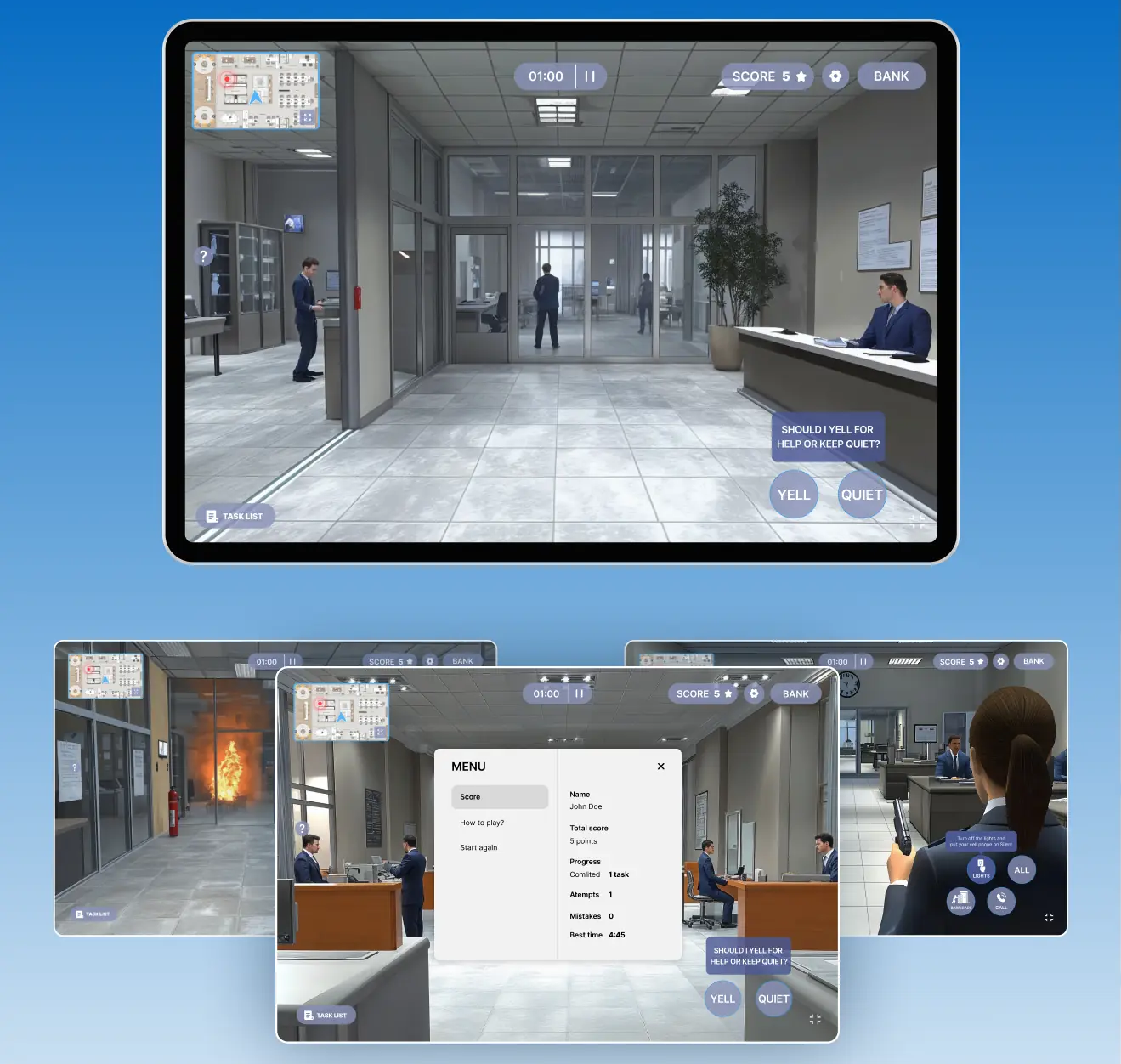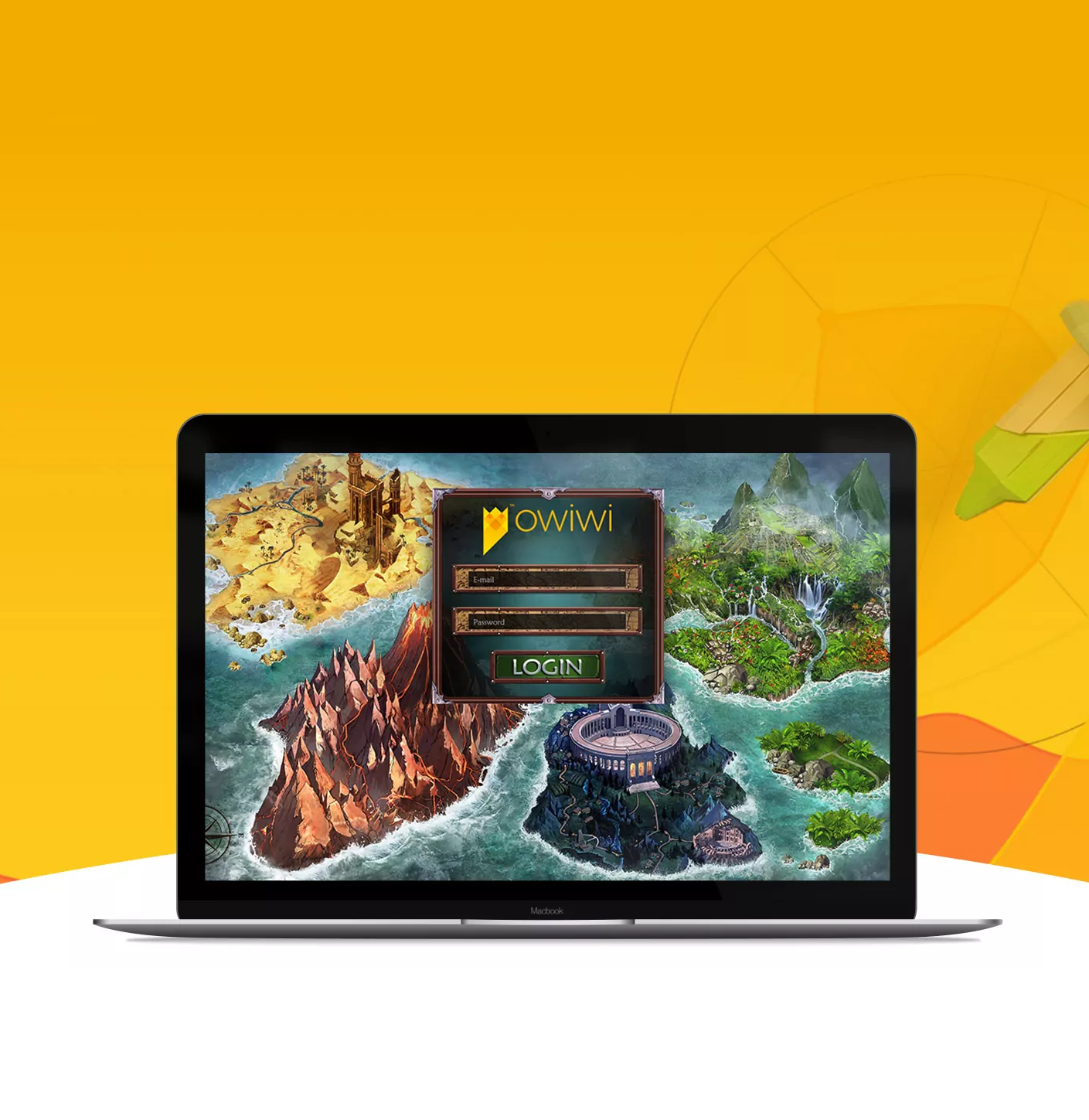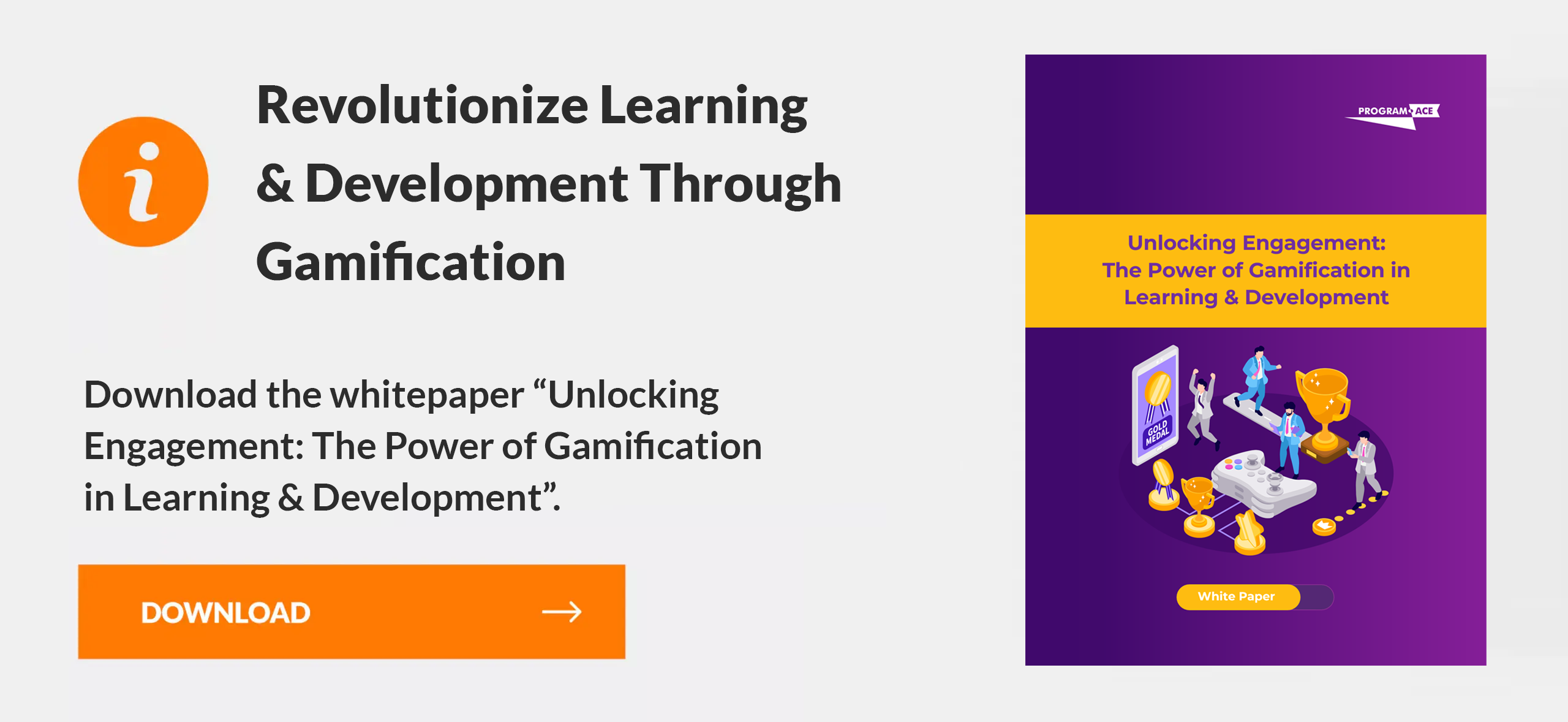Gamified learning experiences provide your organization with a practical way to enhance training outcomes without introducing unnecessary complexity. Our team builds such solutions for clients in many industries, and the pattern is always the same: people learn faster when training feels active, structured, and measurable. You get stronger engagement, more precise performance data, and better retention. Modern teams expect more than static courses, and gamified methods directly address that need.
Many companies come to us after trying generic tools that fail to motivate users. A tailored approach works better, and gamification development services provide that level of precision. You decide what skills matter, and we design mechanics that support those goals. Our methodology ensures that every point, challenge, and reward serves a defined purpose rather than acting as decoration.
From the projects we've delivered, it became clear that sound gamified systems succeed when they match real tasks and reflect actual progress. People respond well to feedback that feels fair and clear, and your organization benefits from training that finally produces visible results. Your learners gain momentum, your managers gain reliable insights, and your overall training program becomes easier to scale.
What Gamified Learning Experiences Really Are and Why They Matter

Gamified learning experiences help users stay engaged during training, rather than simply moving through passive slides. Our team works with many training formats, and every project shows the same pattern: people respond better when they see progress and understand how each action moves them forward. You can incorporate gamification elements in training without transforming your program into a game. You only need clear goals, simple mechanics, and feedback that reflects real work.
Many organizations apply points, levels, and small challenges to guide users through complex topics in a structured way. Performance data becomes easier to understand, and learners stay focused because they always know what comes next. A well-designed system also supports managers by giving them transparent metrics rather than vague impressions.
From Static Content to Gamified Learning: How the Approach Has Evolved
Training used to rely on long presentations, but many teams now expect something more active. Modern systems incorporate interactive checkpoints, reward structures, and progress tracking that demonstrate to learners how they are advancing. Every element must support the training goal, and the types of gamification help decide what works for each case.
A short structured list helps illustrate typical use cases:
- Points. Provide simple progress indicators that motivate steady movement through the material.
- Badges. Mark key achievements in a way users understand instantly.
- Levels. Break complex subjects into clear segments that reduce overload.
- Challenges. Add small tasks that mirror real duties and reinforce skills.
In our professional work, we have found that people learn more effectively when mechanics are simple and closely tied to actual job tasks. You set clear expectations, and users stay engaged without feeling overwhelmed.
Why Engagement Is the New Currency in Gamified Learning Environments
Strong engagement often predicts training success more accurately than course length or topic complexity. Many teams see better results when learners feel active control over their progress.
A few common factors explain the shift:
- Clear feedback. Users understand progress without guessing.
- Balanced rewards. Motivation stays steady because each reward reflects real effort.
- Frequent interaction. Short actions prevent fatigue and keep attention on the goal.
Performance metrics highlight that higher engagement usually correlates with stronger retention and fewer repeated sessions. People want training to feel structured, fair, and relevant to their daily tasks.
Your organization benefits because users complete courses faster, remember material longer, and apply new skills with more confidence. A focused gamified system also gives managers easy access to transparent data. That kind of clarity helps evaluate progress without extra meetings, manual tracking, or fragmented reports.
Core Principles Behind Effective Gamified Learning

Strong gamified learning systems adhere to a few predictable rules that keep users engaged and focused. A clear structure, simple mechanics, and fair progression form the foundation of this approach. Many organizations now use gamification in business to make training less passive and more measurable.
You set goals, track progress, and give users feedback they can act on immediately. People understand what each action means, and managers gain a transparent view of how skills develop over time. Our team builds such systems with one priority in mind: every element must support real learning rather than act as decoration.
Motivation, Feedback, and Progression as Pillars of Gamified Learning
Learners stay engaged when training gives them a sense of movement and purpose. Motivation grows when users can see exactly how far they've gone and what remains ahead. Rewards are most effective when they align with effort and accurately reflect actual skill development.
A short comparison helps illustrate the balance:
- Direct feedback. Users receive immediate responses to their actions, and they adjust more quickly as a result.
- Meaningful progression. Levels or checkpoints show steady growth rather than random jumps.
- Fair rewards. Achievement markers signal real improvement, not arbitrary milestones.
Our research demonstrates that learners devote more time and attention when these three elements work in tandem. People want clarity. They want to feel that their effort matters. A system that communicates progress openly gives them that experience and helps your team reduce repeated sessions or stalled learning paths.
Aligning Gamified Learning Mechanics with Real Performance Outcomes
Gamified elements must always connect to the skills your organization values. Points, challenges, and badges become useful only when they guide users toward real tasks. Many companies fail when they apply game-like mechanics that have no relevance to their daily responsibilities. A more effective approach focuses on actions that align with job requirements.
Numbered guidance keeps the structure simple:
- Define outcomes. Identify the exact skill or behavior you expect from the learner.
- Match mechanics. Select elements that reinforce that outcome instead of distracting from it.
- Measure progress. Track indicators that show visible improvement in real tasks.
According to our internal analysis, programs that follow these steps consistently yield more effective results. People apply new knowledge more quickly, mistakes decrease, and managers gain reliable indicators for evaluation. You get a system that strengthens performance rather than entertaining users without purpose.
Build gamified learning experiences with our professionals
How to Gamify Learning in a Strategic, Outcome-Focused Way
A structured approach helps your team use gamified methods without losing focus on skill growth. Goals guide every decision, and mechanics support the actions you want learners to perform. Many organizations now explore recruitment gamification to test candidate skills in a clear, measurable environment, and the same logic applies to internal training. Our team often helps clients refine existing programs, and the strongest outcomes come from clear priorities rather than complex features.
How to Gamify Learning Without Turning Training into a Distraction
A gamified system should support learning, not pull learners away from the material. Clarity solves most issues. People stay focused when mechanics remain simple and connect to real tasks. Flashy elements add noise, while targeted actions maintain a predictable and effective flow.
A short overview of practical safeguards helps illustrate the idea:
- Lean mechanics. Small, purposeful elements keep attention on the skill, not the interface.
- Real tasks. Activities mirror job actions, so learners practice something they will use.
- Straightforward scoring. Users understand what earns points or progress without having to guess.
User feedback confirms that people value training that respects their time and gives them a clear path forward. You create a steady pace, reduce frustration, and help learners apply new skills faster. That kind of structure lowers cognitive load and keeps progress meaningful.
Practical Steps to Gamify Learning Across Existing Solutions and Content
If you wonder how to make gamified training work, many teams already have training materials in place, and gamified elements can enhance them without requiring a complete rebuild. A careful sequence makes the process easier and ensures efficient implementation.
A simple three-step structure works well:
- Map content. Identify core lessons and highlight the actions users must complete.
- Insert mechanics. Add points, checkpoints, or challenges that support those actions.
- Run small tests. Validate flow and adjust mechanics based on actual learner behavior.
Our monitoring consistently shows that teams follow this approach. Learners stay engaged, instructors receive cleaner data, and your program becomes easier to manage. You boost engagement without overwhelming your existing system, and your organization gains measurable improvement with controlled effort.
Gamified Learning Examples from Real Training Scenarios
Real training projects show most clearly how gamified methods change results. Our team collaborates with banks, healthcare providers, and other sectors, and the pattern remains consistent: people learn more effectively when scenarios resemble their actual work. Short challenges, clear feedback, and meaningful scoring keep users engaged, rather than skipping through content.
Learners gain confidence because they see the impact of each decision, not just a final score. Managers benefit from structured data that reflects fundamental skills, allowing them to track readiness, identify gaps early, and adjust programs without guesswork.
Skill-Focused Gamified Learning Examples for Technical and Operational Roles

Training for technical and operational positions works best when users practice in settings that reflect real duties. One strong example is our Gamified Employee Security Training for a major banking organization. The platform engaged staff with realistic emergency simulations, high-pressure decision points, and a scoring system tied to correct actions. Learners moved through branching scenarios where each decision shaped the next step. Instant feedback helped them understand which actions improved safety and which created risk. Partner feedback demonstrates strong performance improvements after rollout.

Another example is our All-in-One Healthcare Mobile App with Gamification, which helped patients stay engaged with daily health tasks. Users completed quests, cared for a virtual companion, and earned rewards for completing check-ups, taking medication, or updating vital indicators. Clear tasks and positive reinforcement supported routine behavior while keeping the experience friendly and easy to follow. Both solutions showed that targeted mechanics improve consistency, accuracy, and overall engagement.
Compliance, Onboarding, and Sales Gamified Learning Examples That Increase Adoption
Compliance and onboarding programs frequently struggle with low participation rates. Gamified models address this by breaking down material into smaller steps and rewarding users for completing practical actions. A simple structure works well:
- Short tasks. Learners complete clear actions that match each training rule.
- Meaningful scoring. Points reflect correct behavior, showing what matters most.
- Scenario checks. Simulated situations directly test understanding.
Sales teams also respond well to these methods. Progress bars, challenge cards, and scenario-focused questions help new employees learn scripts, handle objections, and understand product details faster.
Realistic examples keep attention on tasks that influence performance. Completion rates rise because people see precisely what they need to do and why it matters. Your organization gains more consistent onboarding results, smoother role transitions, and stronger adoption across large groups.
Gamified Talent Assessment Platform

A gamified recruitment platform transforms assessments into interactive scenarios that reveal essential soft skills, such as resilience, teamwork, and problem-solving, while reducing screening time, interview counts, and risks through the use of psychometrics, benchmarking, customizable norms, and reports tailored for HR decision-makers.
Evaluating Gamified Learning Solutions That Fit Organizational Needs
Choosing the right platform shapes how well your training performs. A strong solution supports your goals, adapts to your content, and gives you measurable results without adding extra complexity. Many teams also look for tools that scale easily across roles and departments.
Our experts often help clients compare options, and the best fit usually comes from matching mechanics, analytics, and delivery format to real training tasks. A careful review of features, workflows, and long-term flexibility helps avoid costly replacements in the future. You gain a system that supports everyday learning, rather than one that slows down your organization.
Key Criteria for Comparing Gamified Learning Solutions and Platforms
A focused checklist makes evaluation easier and keeps each candidate aligned with your goals.
- Core mechanics. The platform should support points, levels, challenges, and feedback that match your learning objectives.
- Scenario flexibility. You need tools that let you adjust difficulty, pacing, and decision paths without technical overhead.
- Progress tracking. Reports must be clear, actionable, and tied to real skills, not generic engagement metrics.
- Integration options. Smooth connections with LMS systems, HR tools, or content libraries simplify daily use.
- Mobile readiness. Users should complete training on any device without losing features or speed.
- Content management. Building, updating, and cloning modules should be quick and intuitive.
- Analytics depth. The platform needs indicators that help you measure improvement and predict skill gaps.
- Scalability. Support for large user groups ensures steady performance during peak demand.
- Support quality. Responsive help, documentation, and technical guidance save time during rollout and maintenance.
Partner feedback demonstrates that careful evaluation helps organizations avoid mismatched tools and secure solutions that support long-term training goals.
Custom vs. Off-the-Shelf Gamified Learning Solutions: What to Consider
| Aspect | Custom Solution | Off-the-Shelf Solution |
| Fit | Built around your workflows, tasks, and goals. | Designed for broad use with limited personalization. |
| Initial timeline | Longer development due to custom features. | Quick launch with ready modules and templates. |
| Flexibility | Full control over mechanics, scenarios, and UI. | Adjustments limited to available settings. |
| Scalability | Tailored to your infrastructure and growth plans. | Works well for general cases but may hit limits at scale. |
| Cost model | Higher upfront cost but stronger long-term value. | Lower starting cost with ongoing licensing fees. |
| Integration | Seamless links to internal systems. | Standard connectors, but complex setups may be restricted. |
| Unique features | Supports specialized tasks and industry-specific workflows. | Focuses on common training needs used by many companies. |
Your choice depends on whether you prioritize speed or long-term precision. Organizations with unique processes often benefit from custom-built solutions, while those requiring rapid deployment may prefer off-the-shelf solutions.
Technology Powering Modern Gamified Learning Experiences

Modern training relies on tools that keep learning flexible, responsive, and easy to update. AI, mobile access, web delivery, and immersive formats help organizations build training that adapts to each user. Learners get clear feedback, familiar interfaces, and mechanics that react to their progress.
Your team gains steady performance data without extra manual tracking. Practical experiments confirmed that combining multiple technologies usually produces smoother adoption, faster content updates, and stronger engagement across different skill levels. You can extend the system later without rebuilding core features, which keeps long-term costs predictable.
How AI and Data Personalization Enhance Gamified Learning
AI makes training more effective by adjusting content and pacing to each learner. Algorithms analyze progress, mistakes, response speed, and completion patterns to match the difficulty level with real ability. People get challenges that feel fair, not overwhelming.
A few elements often deliver the strongest improvements:
- Adaptive paths. Tasks shift automatically based on previous performance.
- Targeted hints. Support appears only when the system detects repeated errors.
- Goal-based pacing. Users move faster through topics they already understand.
- Predictive checks. Early signals reveal where someone may struggle later.
The data collected proves that personalization keeps learners active longer and reduces the number of stalled sessions. Managers also gain clearer insight into who needs extra help and who is ready for advanced material. AI supports training without forcing your team to create dozens of manual variations.
Using Mobile, Web, and Immersive Tools to Deliver Gamified Learning Seamlessly
Training is most effective when it can be accessed in a format that feels natural. Mobile platforms enable users to complete tasks during short breaks, while web-based modules run smoothly on desktops without requiring installation. Immersive tools such as 3D scenarios or lightweight simulations support skill practice in a safe setting.
A balanced setup often includes:
- Mobile modules. Quick actions, progress checks, and short challenges for daily practice.
- Web apps. Stable environments for more profound lessons and structured assessments.
- Immersive scenes. Realistic situations that help users apply knowledge under pressure.
Adoption across enterprises demonstrates that combining all three channels enhances completion rates and ensures more consistent training across departments. Learners build confidence through familiar devices, and your organization gains a flexible system that supports different job roles without extra complexity.
Common Pitfalls When Gamifying Learning and How to Avoid Them
Gamified programs fail when mechanics receive more attention than the learning itself. Some teams add points, badges, or levels without checking whether those elements support real skills. Learners then treat training like a game unrelated to their job. Clear goals and simple rules solve most issues.
You guide users through actions that matter, reward meaningful progress, and remove features that distract. Our team often helps organizations refine existing programs by stripping away clutter and focusing on steps that drive performance. A careful review keeps the system useful, fair, and easy to maintain long-term.
When Gamified Learning Backfires: Over-Gamification and Misaligned Rewards
Too many game elements can overwhelm learners and blur the purpose of the training. Points become noise when they reward actions that do not reflect real work. People lose interest fast once rewards feel arbitrary.
A few warning signs help teams identify problems early:
- Unclear scoring. Learners cannot explain why they earned or lost points.
- Decorative tasks. Activities exist only to trigger animations or badges.
- Inconsistent pacing. Difficulty jumps without logic, causing frustration.
- Reward inflation. Users receive constant rewards that no longer feel meaningful.
Our team has seen many programs recover once rewards match skill development rather than volume of clicks. Learners stay motivated when every action has a clear purpose, and your managers gain data that reflects real improvement. Structured feedback, fair scoring, and balanced difficulty bring the focus back to learning instead of distractions.
Keeping Gamified Learning Sustainable, Ethical, and Inclusive
A sound system supports learners without creating pressure, unfair comparisons, or emotional strain. Designers must consider how different people respond to competition, timed tasks, or public scoreboards. Some users prefer fast action, while others require more time to think. Building flexibility prevents frustration and keeps training accessible.
A few practices help maintain balance:
- Optional competition. Allow users to disable leaderboards or switch to private tracking.
- Adjustable pace. Offer timing options so learners can work at a comfortable speed.
- Clear boundaries. Avoid mechanics that encourage unhealthy levels of repetition.
Feedback from real-world deployments demonstrates that inclusive design fosters stronger adoption and reduces support issues. People complete training willingly, not because they feel pressured. Your company gains a system that remains stable, respectful, and effective for all roles and experience levels.
How Program-Ace Can Help You Build Gamified Learning Solutions
Our team supports organizations that want training built around clarity, measurable progress, and real skill growth. As an innovative solutions integrator, we design systems that align with your workflows, content, and performance goals, without adding unnecessary complexity.
You get mechanics that fit your learning tasks, analytics that reflect actual progress, and delivery formats that work across desktop, mobile, or immersive environments. Drawing on years of experience, we tailor each solution to your audience, whether you require realistic simulations, onboarding modules, or soft-skill assessments.
If your organization plans to introduce gamified training or enhance an existing program, please don't hesitate to contact us. We can help you build a reliable and scalable system that supports long-term learning and enhances everyday performance.

























